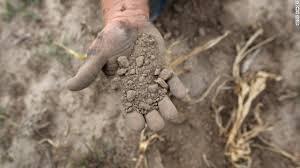
USDA Designates 2 Counties in Utah as Primary Natural Disaster Areas
With Assistance to Producers in Colorado
WASHINGTON, June 25, 2014 — The U.S. Department of Agriculture (USDA) has designated Duchesne and Uintah counties in Utah as primary natural disaster areas due to a recent drought.
“Our hearts go out to those Utah farmers and ranchers affected by recent natural disasters,” said Agriculture Secretary Tom Vilsack. “President Obama and I are committed to ensuring that agriculture remains a bright spot in our nation’s economy by sustaining the successes of America’s farmers, ranchers, and rural communities through these difficult times. We’re also telling Utah producers that USDA stands with you and your communities when severe weather and natural disasters threaten to disrupt your livelihood.”
Farmers and ranchers in the following counties in Utah also qualify for natural disaster assistance because their counties are contiguous. Those counties are:
Carbon Emery Summit Wasatch
Daggett Grand Utah
Farmers and ranchers in Garfield, Moffat and Rio Blanco counties in Colorado also qualify for natural disaster assistance because their counties are contiguous.
All counties listed above were designated natural disaster areas on June 25, 2014, making all qualified farm operators in the designated areas eligible for low interest emergency (EM) loans from USDA’s Farm Service Agency (FSA), provided eligibility requirements are met. Farmers in eligible counties have eight months from the date of the declaration to apply for loans to help cover part of their actual losses. FSA will consider each loan application on its own merits, taking into account the extent of losses, security available and repayment ability. FSA has a variety of programs, in addition to the EM loan program, to help eligible farmers recover from adversity.
Additional programs available to assist farmers and ranchers include the Emergency Conservation Program, The Livestock Forage Disaster Program, the Livestock Indemnity Program, the Emergency Assistance for Livestock, Honeybees, and Farm-Raised Fish Program, and the Tree Assistance Program. Interested farmers may contact their local USDA Service Centers for further information on eligibility requirements and application procedures for these and other programs. Additional information is also available online at http://disaster.fsa.usda.gov.
FSA news releases are available on FSA’s website at www.fsa.usda.gov via the “Newsroom” link.
USDA is an equal opportunity provider and employer. To file a complaint of discrimination, write: USDA, Office of the Assistant Secretary for Civil Rights, Office of Adjudication, 1400 Independence Ave., SW, Washington, DC 20250-9410 or call (866) 632-9992 (Toll-free Customer Service), (800) 877-8339 (Local or Federal relay), (866) 377-8642 (Relay voice users).